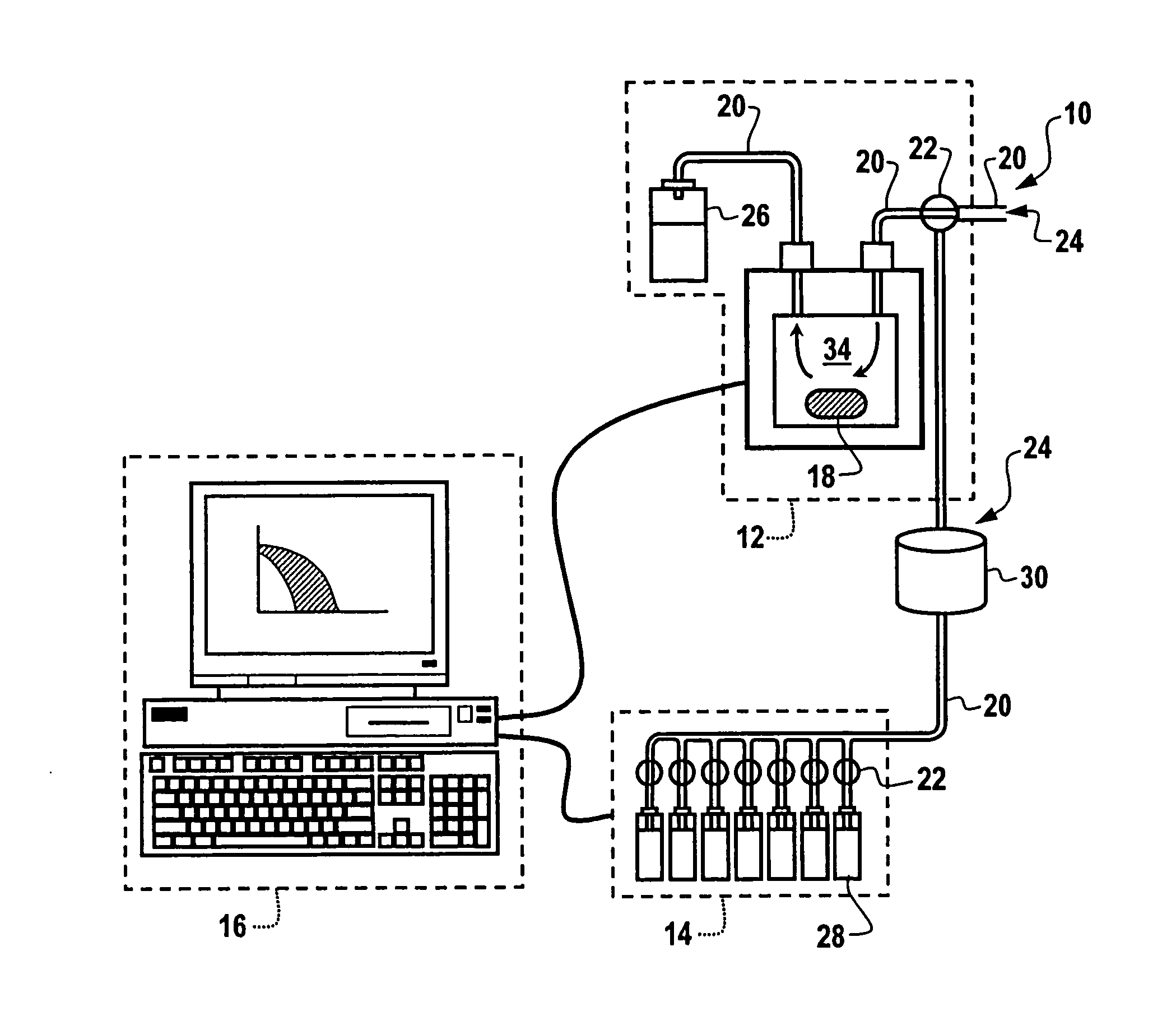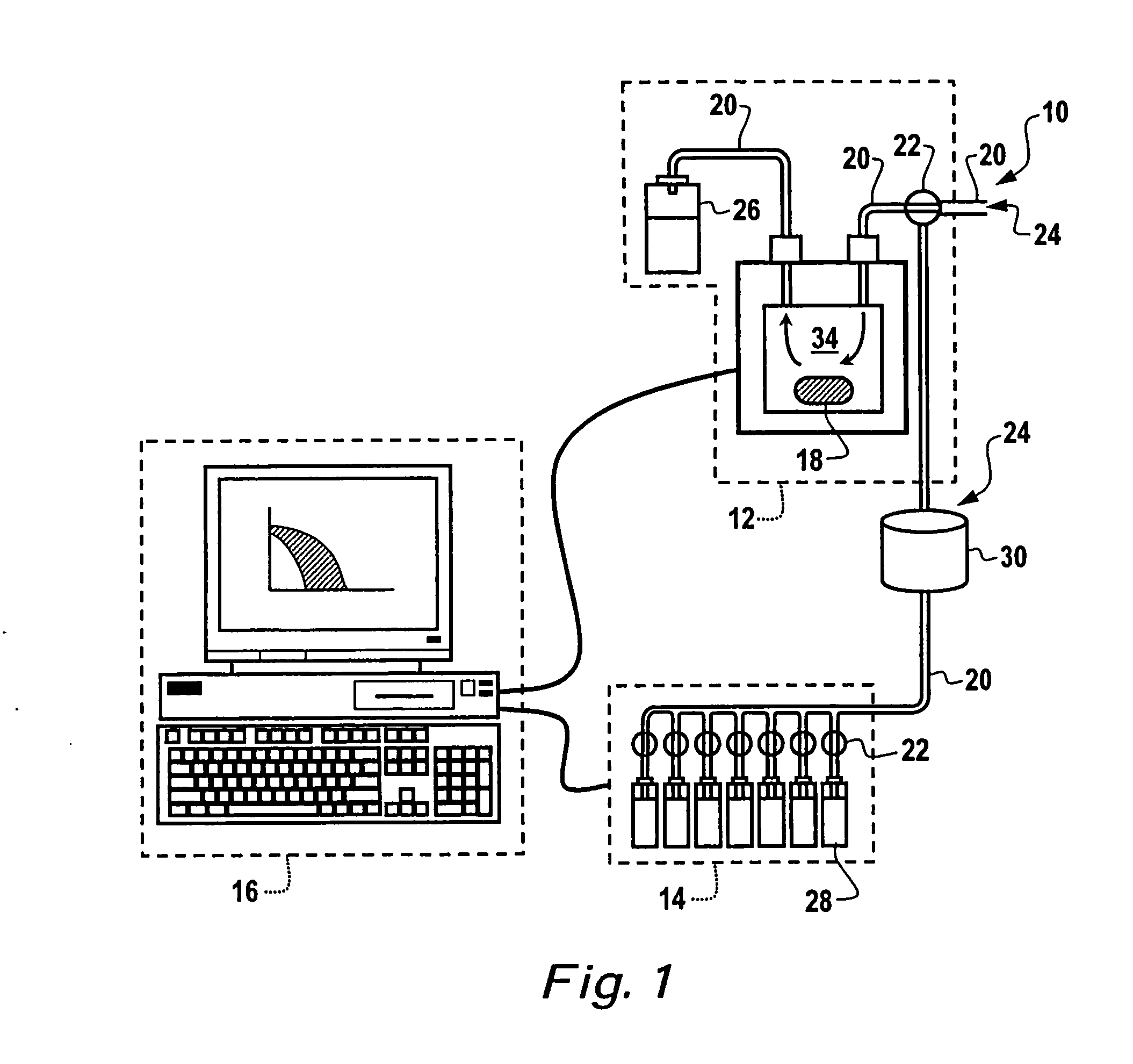Antioxidant sensor, methods and compositions
a technology of anti-oxidant sensors and sensors, applied in the field of anti-oxidant sensors, can solve the problems of lack of activity, skewing the results of fluorescence assays, and sample fluorescence, and achieve the effect of effective amounts of anti-oxidants
- Summary
- Abstract
- Description
- Claims
- Application Information
AI Technical Summary
Benefits of technology
Problems solved by technology
Method used
Image
Examples
example 1
Comparison of Antioxidant Activity Using ORAC(fl) and ORAC(o) Assays
[0104] Ingredients for an antioxidant composition were analyzed for antioxidant activity using a prior art oxygen radical absorption capacity method that measures fluorescence (ORAC(fl)), and using the method of the present invention that measures dissolved oxygen (ORAC(o)). The antioxidant activity of a product is its ability to protect the system from damage caused by peroxyl radicals.
[0105] Prior Art Method of Measuring Antioxidant Activity for Comparison. For the ORAC(fl) assay, the method of Ou et al. (Ou, B., Hampsch-Woodill, M. and Prior, R. L., J. Agric. Food Chem. 2001, 49, 4619-4626) was followed. Differences from the Ou procedure as published included the speed of the orbital shaker (Ou, 400 rpm; herein, 280 rpm), and the centrifuge speed (Ou, 14,000 rpm, 15 min; herein, 3200 rpm, 15 min and the length of the assay (Ou, 30 min; herein, 100 min). Fluorescein, sodium salt, was obtained from Aldrich (Milwa...
example 2
A Synergistic Antioxidant Composition
[0125] According to the dietary supplement of the present invention, five ingredients were combined into an antioxidant composition, each of which is prominent in the diet of long-lived peoples from regions around the world. The present inventors selected ingredients based on a comprehensive search of the diets in areas known for longevity. The present inventors recognized that the diets in these regions were rich in flavonols and tocopherols. It was further recognized by the inventors that certain natural compounds interact favorably with molecules that reactivate their anti-oxidant activity, e.g., vitamin C. In fact, extensive research supports the role of Vitamin C in the regeneration of, e.g., α-tocopherol (Pizzorno and Murray, Textbook of Natural Medicine, 1999, 2nd Ed. New York, Churchill Livingston).
[0126] Based on this research, the inventors combined isolated and purified extracts from natural and other sources that include high percen...
example 3
ORAC(o) Detection of Anti-oxidant Synergy and Potentiation
[0152] To show that the ORAC(o) assay was able to detect both lipophilic and lipophobic anti-oxidant activity, a series of studies were conducted to show the effect of specific combinations of known concentrations of lipophilic and lipophobic anti-oxidant and the potentiation of the same with the addition of, e.g., grape seed extract and green tea extract as compared to grape seed extract and green tea extract alone. FIG. 15 is a graph showing the ORAC(o) values obtained with different ratios of quercetin and mixed tocopherols. FIG. 16 is a graph showing the ORAC(o) values for different ration of grape seed extract (GES) and green tea extract (GTE). After the determination of the maximum ratio for anti-oxidant activity for GSE and GTE, the two were combined with the optimized ratio for quercetin and mixed tocopherols. FIG. 17 is a graph that shows the ORAC(o) values of the combination of the maximum quercetin:mixed tocophero...
PUM
| Property | Measurement | Unit |
|---|---|---|
| concentration | aaaaa | aaaaa |
| concentration | aaaaa | aaaaa |
| half life | aaaaa | aaaaa |
Abstract
Description
Claims
Application Information
 Login to View More
Login to View More - R&D
- Intellectual Property
- Life Sciences
- Materials
- Tech Scout
- Unparalleled Data Quality
- Higher Quality Content
- 60% Fewer Hallucinations
Browse by: Latest US Patents, China's latest patents, Technical Efficacy Thesaurus, Application Domain, Technology Topic, Popular Technical Reports.
© 2025 PatSnap. All rights reserved.Legal|Privacy policy|Modern Slavery Act Transparency Statement|Sitemap|About US| Contact US: help@patsnap.com



